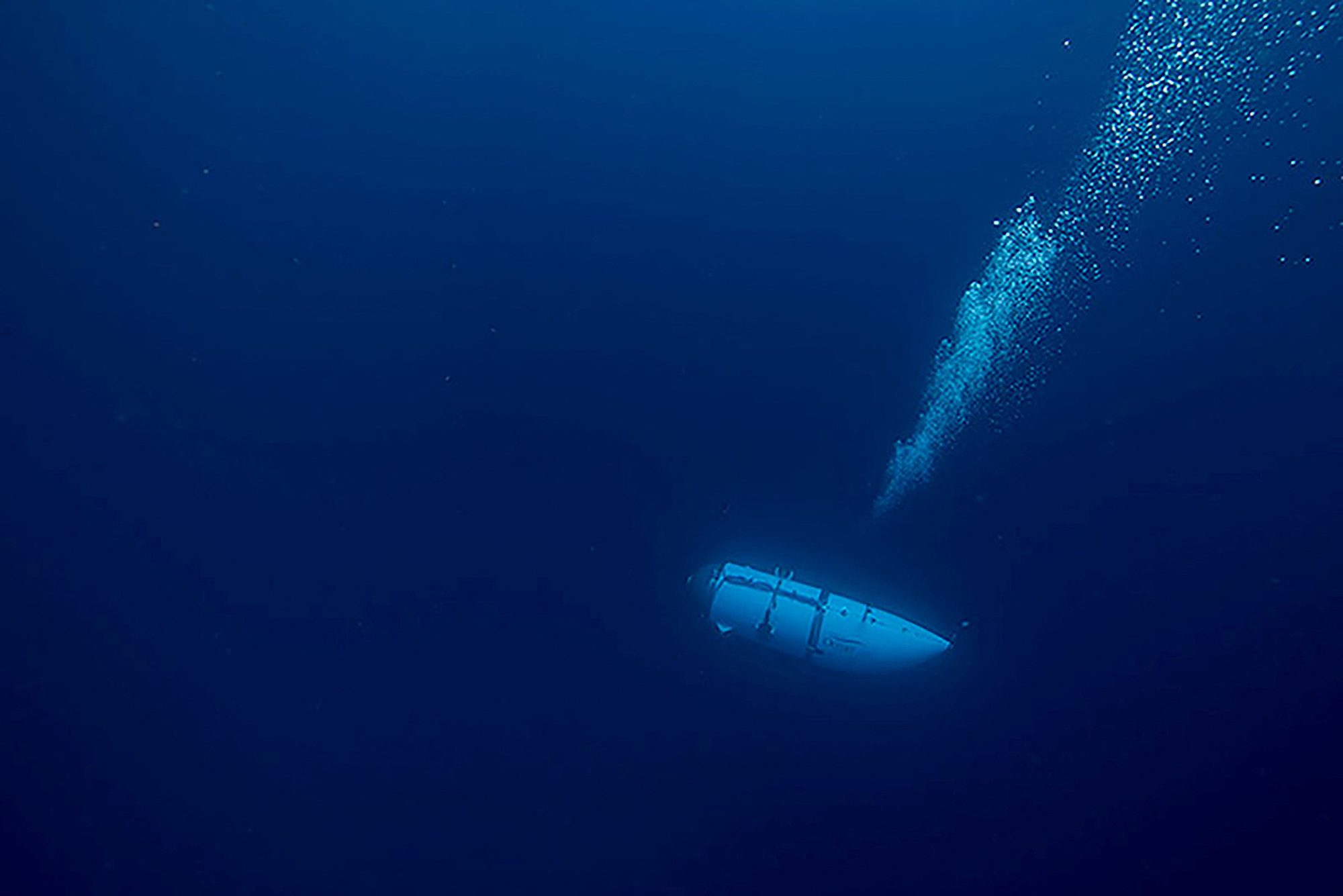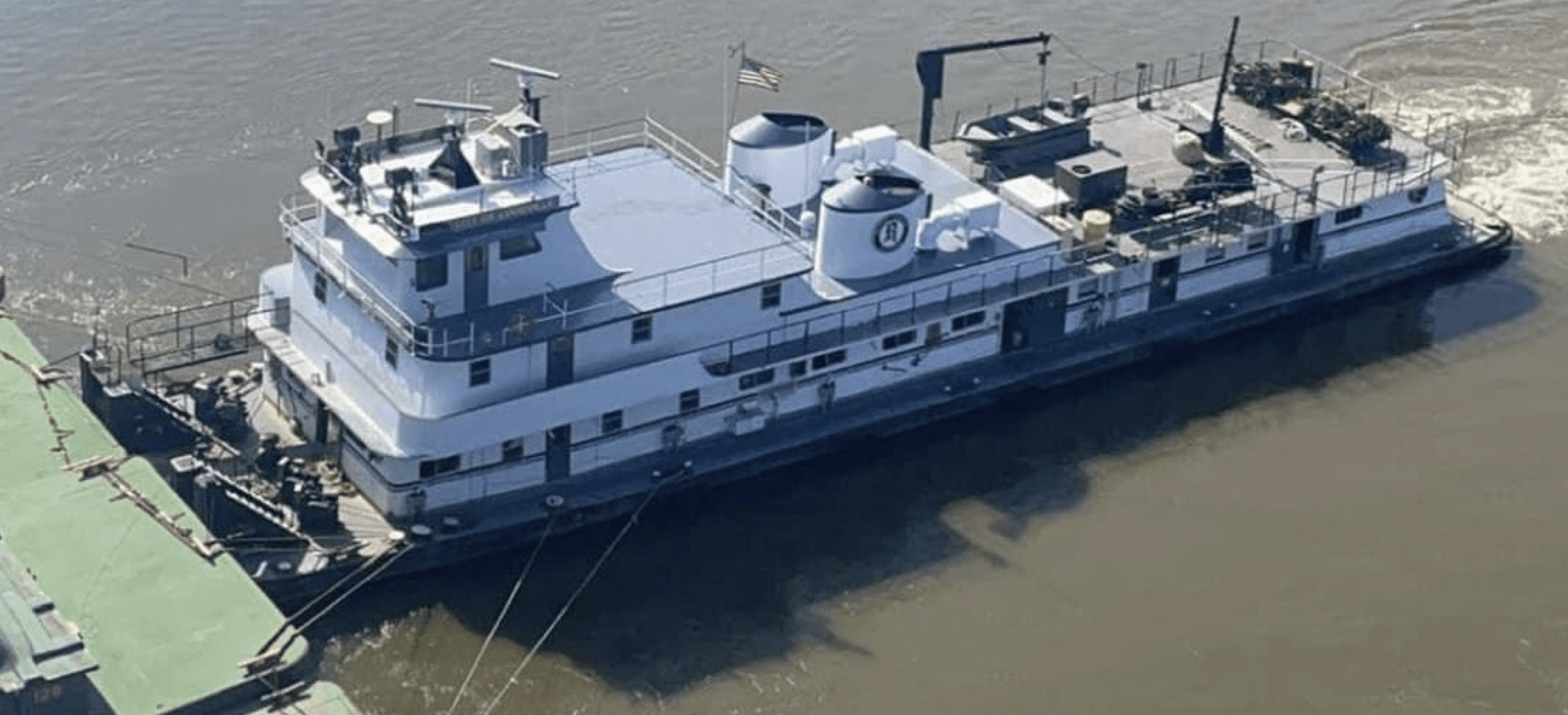(Bloomberg) —
As multiple ships scoured the North Atlantic this week for the missing submersible headed to the Titanic wreck site, the US Navy had already detected an implosion on Sunday at the site where the vessel lost communications.
The information, which wasn’t definitive, was immediately shared with the US Coast Guard, and a decision was made to continue the mission as a search-and-rescue to “make every effort to save the lives on board,” according to a senior Navy official, who spoke under the condition of anonymity.
The Coast Guard said on Thursday that the five crew members of the Titan submersible died from a “catastrophic implosion” of their vessel after examining debris found underwater by a remotely operated vehicle. The debris was found 1,600 feet (488 meters) from the bow of the Titanic.
“We immediately notified the families,” Rear Admiral John Mauger said at a briefing in Boston. “On behalf of the US Coast Guard and the entire unified command, I offer my deepest condolences.”Play Video
The nose cone of the ship was discovered Thursday morning by an ROV from the vessel Horizon Arctic. Other pieces of debris, including portions of the ship’s pressure hull, were found soon after, the Coast Guard said.
The unified command doesn’t have an estimate for when search operations on the sea floor will end, Mauger said. He added that the team would continue collecting information to attempt to determine the cause of the implosion.
The Transportation Safety Board of Canada said on Friday it was launching an investigation into the disaster. A TSB team is traveling to St. John’s, Newfoundland and Labrador, to gather information and conduct interviews, the agency said. Canada’s Polar Prince cargo ship provided surface support to the Titan mission.
The Titanic International Society, a nonprofit dedicated to preserving the history of the doomed ship and the passengers who died, called for an inquiry into the submersible’s design and emergency procedures. The group said it was important to remain mindful of the dangers of hubris and overreliance on technology.
“We believe that an extensive, detailed investigation by the U.S. Coast Guard, the National Transportation Safety Board and/or their Canadian counterparts clearly is warranted,” the society said in a statement Thursday evening.
The US Coast Guard is still working to develop a timeline of the events leading to the submersible’s implosion and the response to it, Mauger said at Thursday’s briefing.
Global Interest
The saga of the missing craft known as the Titan sparked global fascination as an international fleet of ships and aircraft desperately surveyed an area of the North Atlantic twice the size of Connecticut. Rescuers raced around the clock, concerned that the Titan’s estimated 96-hour oxygen supply was dwindling after it lost contact with the Canadian research vessel Polar Prince on June 18.
The US Coast Guard earlier in the week said unidentified sounds were detected during the search, but those noises weren’t linked to the missing craft. An elite US Navy acoustic detection system picked up the sound of a blast from near the debris site only hours after the submersible had deployed, the Wall Street Journal reported on Thursday, citing a statement from a US defense official.
On board the Titan were Hamish Harding, 58, of the UK, founder of investment firm Action Group and an avid adventurer; French maritime expert Paul-Henry Nargeolet, 77; Stockton Rush, 61, chief executive officer of Everett, Washington-based OceanGate Inc., which ran the expedition; and Shahzada Dawood, 48, and Suleman Dawood, 19, a father and son in one of Pakistan’s most prominent families.
“These men were true explorers who shared a distinct spirit of adventure, and a deep passion for exploring and protecting the world’s oceans,” OceanGate said in a statement. “Our hearts are with these five souls and every member of their families during this tragic time. We grieve the loss of life and joy they brought to everyone they knew.”
The Titan, a 6.7-meter-long craft made of carbon fiber and titanium, was designed to carry a pilot and four crew to a maximum depth of 4,000 meters (13,120 feet). According to OceanGate’s website, an onboard system was able to track the health of the crew and provide “early warning detection for the pilot with enough time to arrest the descent and safely return to surface.”
But no messages were received after the Polar Prince lost all communications with the Titan on June 18, about 1 hour and 45 minutes after it began diving toward the Titanic, which sank in 1912 on its first trans-Atlantic voyage.
OceanGate says it offers 10-day expeditions to the Titanic site, providing “qualified explorers” the opportunity to join as mission specialists. Their fees underwrite the training and participation of the science team exploring the ship that sank in 1912 on its maiden transatlantic voyage after hitting an iceberg. OceanGate also ran expeditions to explore the wreck in 2021 and 2022, according to its website.
–With assistance from Tony Capaccio.
© 2023 Bloomberg L.P.

 Join The Club
Join The Club











